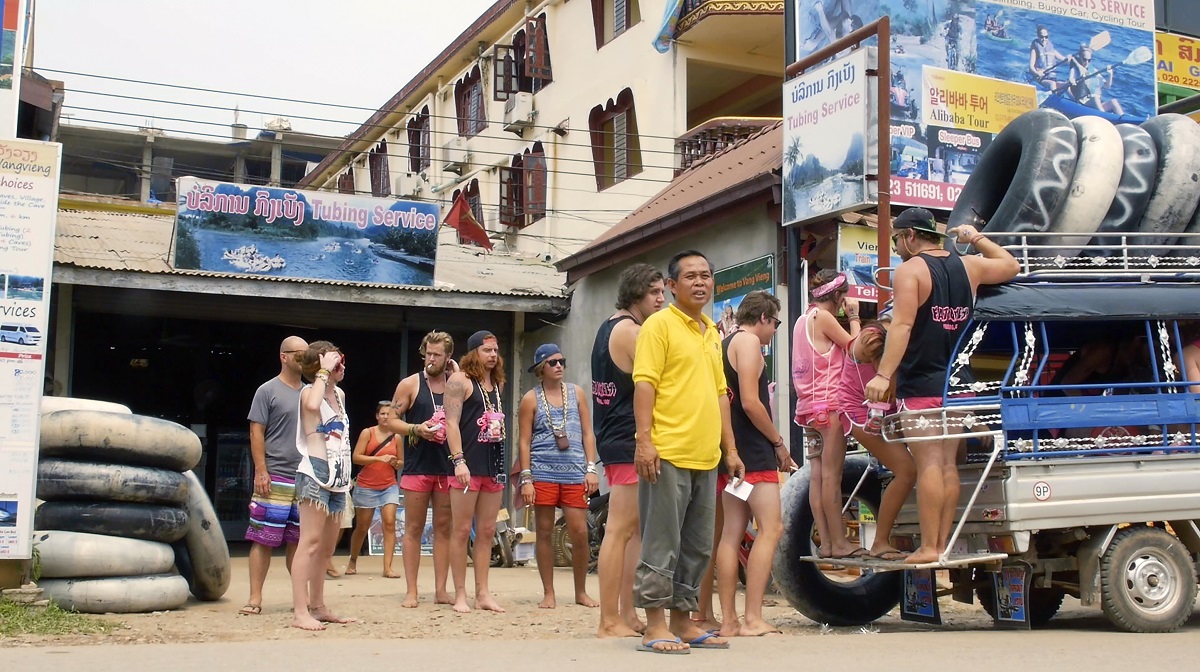Kimi Takesue’s latest film, “Onlookers,” begins and ends basically with the same scene, albeit shot twice. Both scenes feature a few local residents waiting by the roadside with food in their baskets. These scenes bookend the 71-minute experimental film that takes its viewers to an immersive experience that not only invites them to travel along, but also to meditate on why people travel in the first place.
(I could hear Richard Ayoade’s nasally sounding curmudgeon saying, “We’re here, but should we have come?”)
“Why do we travel?”
There’s a level of subjectivity when it comes to travel, and “Onlookers” aims to examine that. Indeed, the movie asks pointedly, “Why do we travel? What do we seek?” And while normally the filmmaker uses exposition and linear narrative storytelling to answer the question, Takesue bucks the convention and simply shows a film largely devoid of dialogue. Instead, the audience gets a front-row seat to clips after clips of tourist spots around Laos; as tourists from all over the world marvel at the sites and take countless photos, intent on bringing back home new memories from the trip.
As the film runs like a rolodex of random video clips from an East Asian country without transition effects, we realize the essence of the film’s title. In more ways than one, the viewing experience has thrust the audience as observers, or onlookers, to the tourists who themselves are onlookers to a foreign place.

The Paradox of Traveling
Apropos of being observers, Takesue’s film explores the paradox of travel itself. We see several instances throughout the film where tourists would be herded to a particular site. They would then take a few photos of the place, take selfies, then move on to the next site. Another scene shows the more outgoing of the bunch scaling a mountain, only to take selfies at the top, rather than enjoy the extraordinary view.
One of the movie’s most ironic scenes for this critic occurs in the middle of the film, where Takesue films a few travelers enjoying a quiet morning in a guesthouse, sipping smoothies while watching an episode of “Friends.” For all the audacity to find some ‘peace and quiet’ by retreating to places far from their homes, these tourists might in reality simply just want to bring their home anywhere and anytime they want to.
In these instances, the question becomes louder, “What is the purpose of one’s travel?”
[Related Review: ‘Invisible Demons’ Incisively Highlights Unchecked Environmental Abuse in the Name of Economic Progress]
‘Onlookers’: Kimi Takesue’s Visual Flair Dialed to Eleven
With her reputation as an experimental filmmaker with a keen eye for social commentary, Takesue doubles down on her visual flair with “Onlookers.” Following the director’s films “Where Are You Taking Me?” and “95 and 6 to Go,” Takesue’s latest outing quietly observes Western backpackers as well as tourists from all over the world visit a country very dependent on tourism. Even without dialogue and proper transitions (the latter being a misstep for me), the film works as a singular vision from a filmmaker who yearns to understand what travel means to these people.
Takesue also focuses on the nuances of the interactions. Given the documentary style of its filmmaking, it would be hard to believe that any of the scenes were staged. Either way, the movie touches upon the imbalance between the tourists and the locals, with the subtle camerawork showing how the locals become background pieces to the scene once the tourists arrive to get their fill of photos and videos.
Films like “Onlookers” are a tricky artform to put into words, not because they don’t warrant such a response. Instead, they provide insights as to how the medium can elicit reactions from its audiences not in the way conventional storytelling has done since god-knows-when.
A travelog of admirable restraint, Kimi Takesue’s ‘Onlookers’ is a fine exercise in meditation of the human desire. It examines the effects of tourism in a country steeped in culture and tradition through a collage of video clips with almost no dialogue—giving the film an immersive quality that’s not only interactive, but also incisive.